Watercolor is known for being a difficult medium to master.
Since watercolour is unpredictable, you might be struggling to master the flowing and uncontrollable nature of the diluted paints.
As a result, your paintings don’t end up looking very good.
What makes watercolour look bad are dull colours that lack vibrancy, brushstrokes that appear blotchy or streaky, and paintings that have been overworked to a fault.
But fear not! There are many ways to fix overworked watercolour problems.
By applying the strategies mentioned in this article, you’ll have the knowledge to improve your watercolour paintings and create the beautiful artwork you envision.
So keep reading to discover the strategies and their solutions!
DISCLOSURE: This page contains affiliate links. If you make a qualified purchase using any of the links, I’ll earn a small commission at no extra cost to you. I appreciate every sale because it allows me to create free content to promote the growth of this website.
Table of Contents
How to Fix Watercolour Mistakes?
More than likely, your main problem is that you haven’t yet learned about watercolour mistakes beginners make that prevent a painting from becoming a work of art.
One of the biggest mistakes that beginner watercolour artists make is not investing in good-quality art supplies such as 100% cotton paper and high-quality paints, both which can have a positive impact on the outcome of your painting.
First, let’s start with paper. It’s important to invest in high-quality watercolour paper because it’s very absorbent. The paint pigments take to the texture of the paper very easily.
When you compare this to low-quality wood pulp or cellulose paper, you’ll notice right away that the cheaper paper is way less absorbent.
As such, it’s much harder to paint multiple layers on paper that easily buckles and warps from too much water.
Second, let’s address paints. Cheap dollar store paints contain tons of fillers, which means the pigments aren’t pure. This means your paints are likely to appear chalky or too opaque once they’ve dried.
Correct this mistake by doing one of the following:
- Invest in a good set of student grade paints such as the Winsor & Newton Cotman Watercolours
- Invest in high-quality, affordable artist grade paints such as the White Nights Watercolours
Third, one of the best ways to prevent your watercolour from looking bad is investing time into learning about watercolour techniques.
To do this, you need to master common watercolour techniques such as the wet-on-wet, wet-on-dry, and dry brush techniques.
Before you begin painting, conduct a few warm-up practices. These can include value studies and experimental studies. Once you’re warmed up, you’ll have an easier time painting with ease.
Why Do My Watercolours Look Dull?
One of the most common watercolour struggles is figuring out why your watercolour painting looks dull.
There are a number of reasons why your watercolours are losing their vibrancy and luminosity.
Your watercolours look dull because the paint pigments are contaminated. To fix this, always rinse off your brush in clean water every time you switch to a new colour. As well, prevent contamination by waiting for the layer to dry before painting on top of it. Otherwise, the layers will bleed into one another.
By following these simple tips, you’ll drastically cut down on the probability of your pigments becoming contaminated and dulled.
In addition, there are a few other ways to ensure that your watercolours will look vibrant and bright.
For example, learn about colour theory to help you make better colour choices. After all, watercolour is all about layering.
So if you’re laying colours that don’t compliment each other, the layers can end up producing dull, lifeless colours.
And spend some time learning how to mix colours properly. Some paint pigments don’t mix well with others, such as paints that are very opaque or which are made from many different pigments.
So if you’re curious, check out this detailed article which breakdowns how to avoid muddy colours.
Lastly, be sure to never mix white with a pigment because it will make the pigment appear dull and chalky. Unless you’re intentionally trying to create pastel colours, leave white out of your mixing.
How to Fix Overworked Watercolour Paper?
Another frequent mistake that makes watercolour look bad is when you overwork your painting.
Overworking a painting means that you spend too much time touching up details and obsessing over trying to make your painting perfect. This is how perfectionism can ruin art.
Watercolour is meant to be a free-flowing and unpredictable medium. Overworking a painting will make it look forced and unnatural.
Often enough, you don’t even realize that you’ve overworked the piece until it’s already overworked.
So, what can you do to solve this conundrum?
There are a few things you can do to minimize the chance of overworking your artwork. For example, you can:
- Avoid applying too many brushstrokes—the fewer the better
- Stop trying to add touch-ups—you’re painting, not editing a photo
- Aim to paint fewer layers
- Don’t use too many opaque pigments because these paints won’t dry as translucently and vibrantly
- Stop while you’re ahead
In time, you’ll develop an eye for knowing when it’s best to put down the brush and appreciate your watercolour painting for the beauty that it is.
Related: Check out this in-depth article which breaks down the best strategies to fix overworked paper problems.
Why Does My Watercolour Look Blotchy or Streaky?
Another problem will often make watercolour look bad is accidentally painting brushstrokes that produce a blotchy or streaky texture.
If your watercolour looks blotchy or streaky, you’re probably painting with pigment that is too thick.
After all, watercolour is a thin, translucent medium. So, you need to make sure that you are appropriately diluting the paint pigment before you paint with it.
To dilute your watercolour pigments, complete the following steps:
- Gently mist your paints with a spray bottle and then wait a minute. This will activate the pigments
- Dip your paintbrush into a clean jar of water and tap off any excess water
- Load up your brush with some pigment, but don’t overdo it. After all, you’re not painting with acrylics
- Transfer the pigment over to a clean mixing well and swish the pigment around the well. The pigment will break down as it blends with the water that’s on the brush
- If the consistency appears too thick, simply add more water to the mixing well until the pigment is diluted to your satisfaction
- Before you begin painting, make sure you text the colour on a scrap piece of paper. If it appears light, bright, and translucent, you’ve done a good job
On the other hand, if you use too much water, you’ll soak the watercolour paper. This will cause the paper to warp or buckle.
Therefore, the biggest takeaway is that in order to avoid creating blotchy or streaky watercolour textures, you must learn to master water control.
This skill is crucial if your goal is to become a skilled watercolour painter. So, dedicate time to practicing it on a regular basis.
With consistent and regular practice, you’ll find it much easier to control the paintbrush as well as the brushstrokes.
How Do You Make Watercolours Look Good?
Now that you understand which problems are likely making your watercolour look bad, it’s time to discuss how to make your paintings look better.
Vibrancy, luminosity, and transparency are key qualities of a good watercolour painting.
Look at it this way:
Watercolours look bad when they are too opaque. So, strive to achieve the opposite, which are light and transparent layers.
Watercolours look dull when they lack vibrancy. So, make sure you’re regularly rinsing off your brush and mixing colours whose pigments compliment each other.
Watercolours look overworked when they lose their luminosity. So, aim for a “less is more” strategy by making sure you aren’t adding too many layers or overcomplicating a piece with too many colours.
For a detailed explanation of how to achieve more vibrant colours, luminous paints, and transparent layers, check out this article about key elements of watercolour paintings.
Another fantastic way to make great watercolour paintings is to ask for constructive art criticism so that you can get individualized feedback for your artwork.
You can do this by asking your art teacher or instructor, posting your work in art forums, or showing your portfolio to a professional artist.
Their constructive criticism can help you improve your artwork at a much faster pace since you’ll know exactly what to work on to improve your art skills.
Conclusion
Does your watercolour look bad? If it does, you’ve probably committed one or more of the mistakes on this list.
The hardest part is identifying the mistakes or problems that you routinely encounter.
Now that you have identified which watercolour problems are negatively affecting the quality of your paintings, you can use the solutions mentioned in this article to improve your watercolour paintings.
Like any skill, it takes time and practice to break bad art habits and to replace them with better ones.
But as long as you keep painting and never stop practicing your skills, you are guaranteed to consistently create beautiful artwork that you’ll be proud of.
So don’t give up!
Now, if you want to learn about 9 benefits of watercolour painting, check out this well-loved blog post.
What is your biggest watercolour struggle, and what lesson or tip did you use to overcome that obstacle? Share your knowledge in the comments below!

Miranda Balogh
Artist & Online Educator

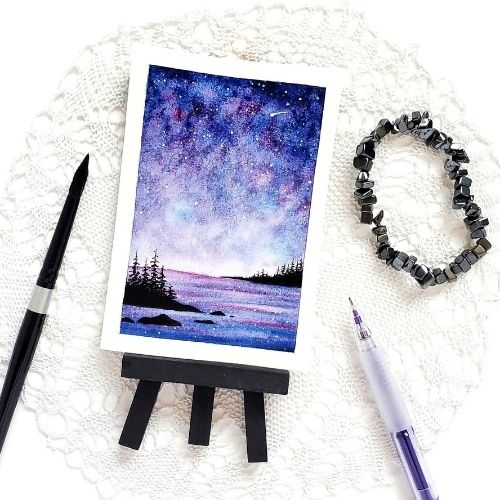
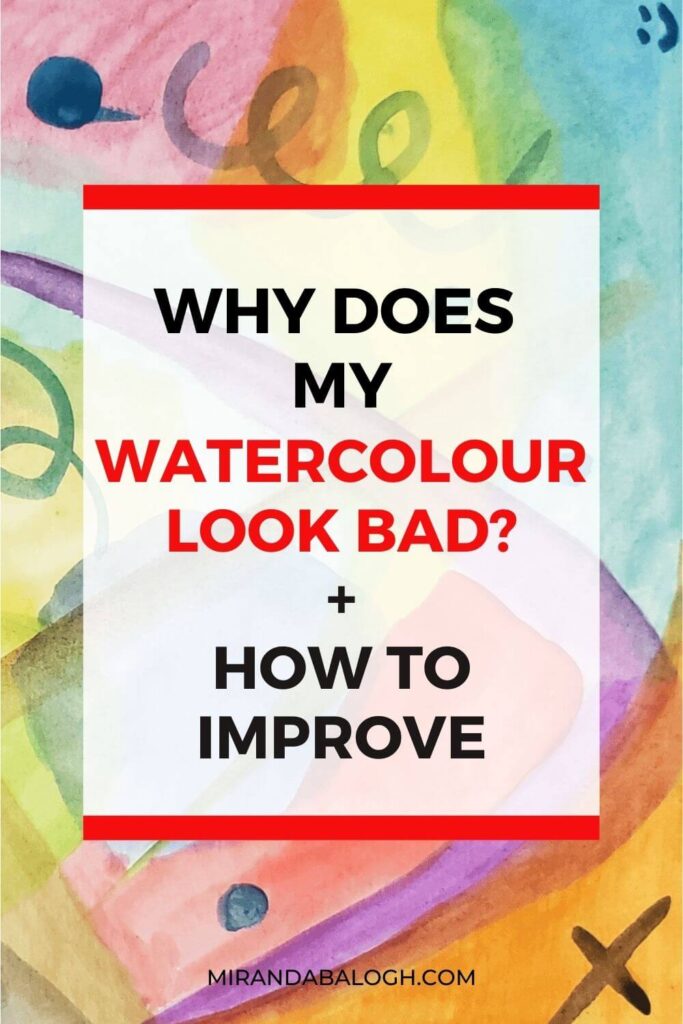
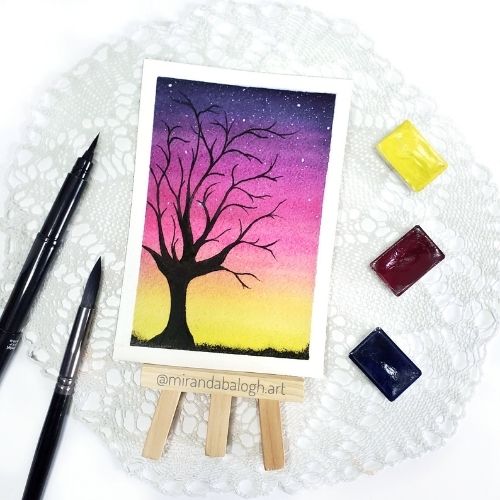
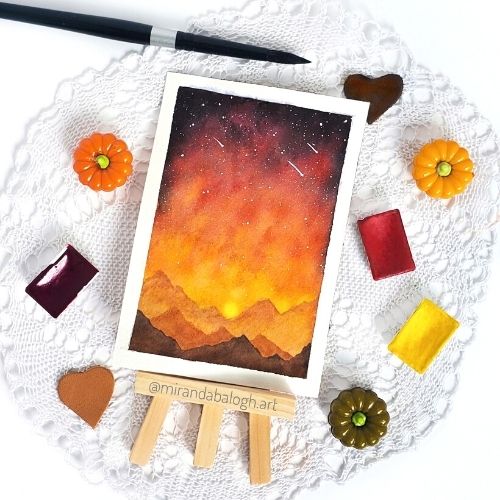
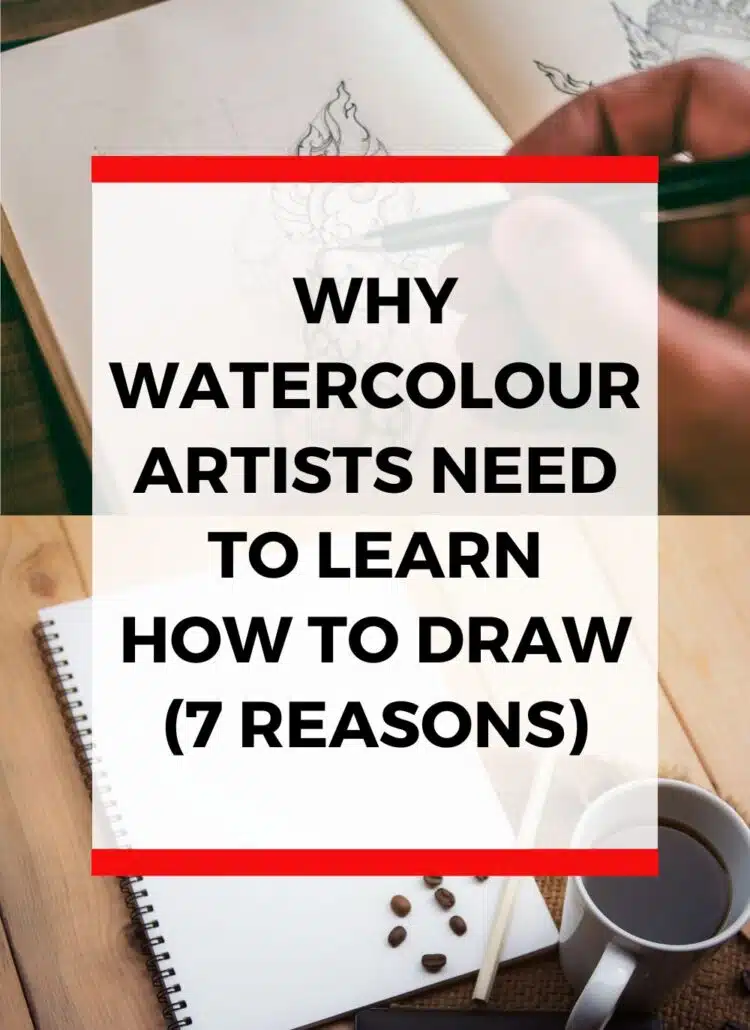

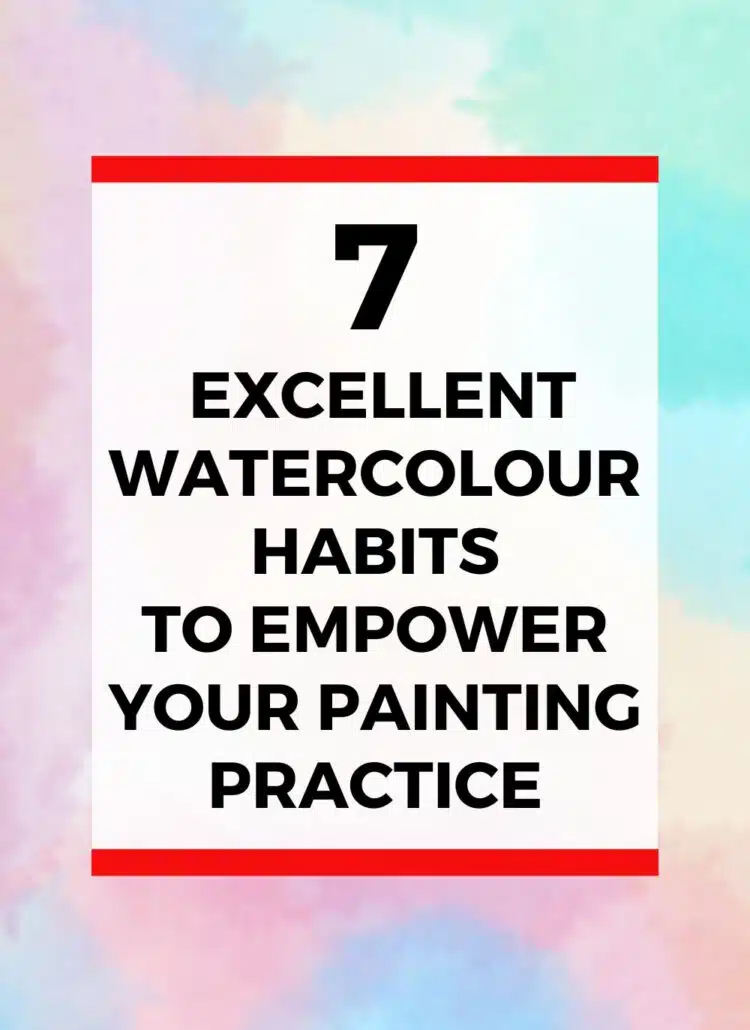
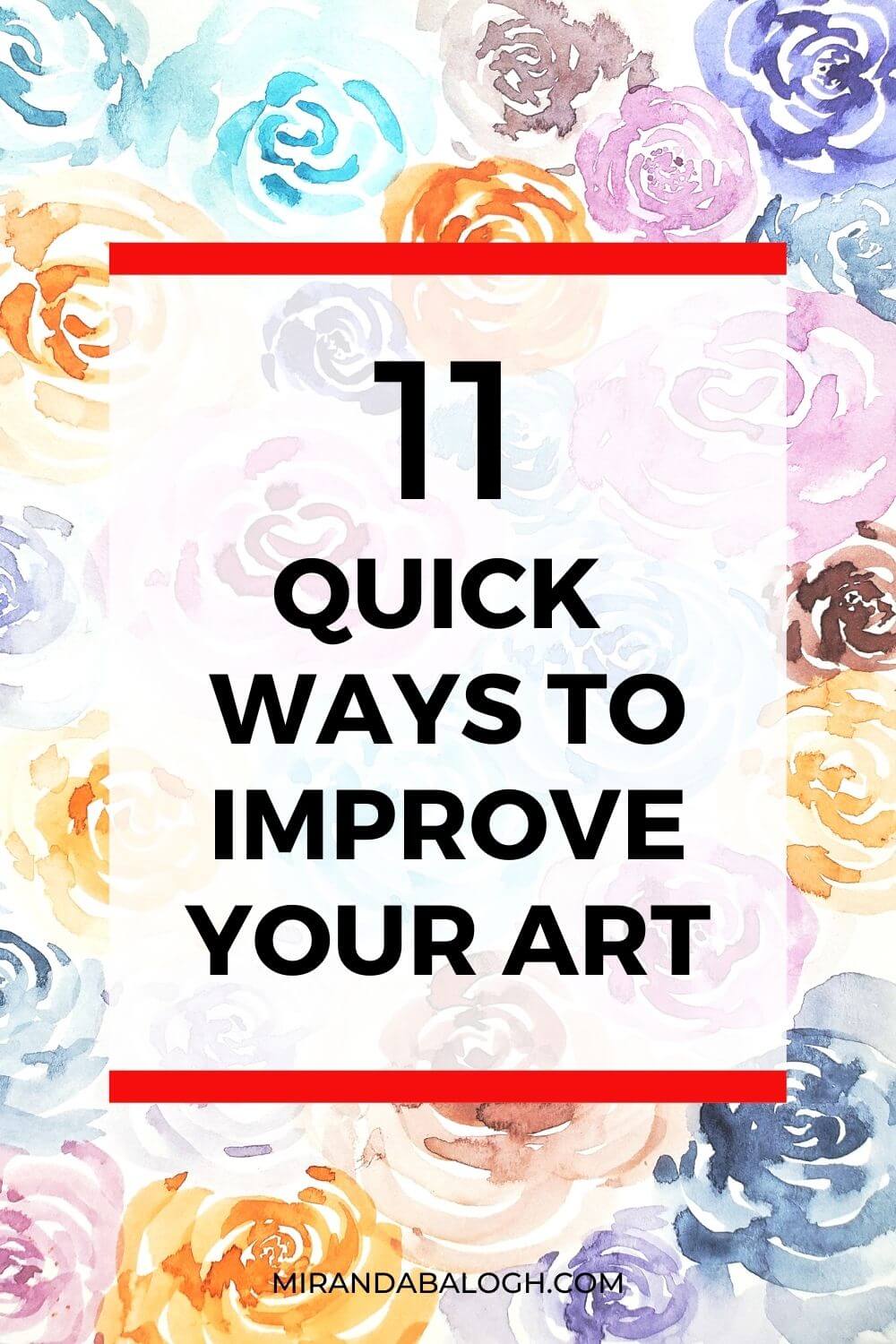
Great tips! The paper really does make a difference!
Yes, it really does!
R.e final dull water colour results, as I’ve seen it mentioned in a couple of other posts. Personally I’d put it down to poor mixing technique and not referencing the other colours you’ve already put down on the paper (creating a colour wheel using your own pallet will help!) My watercolour pallet’s full of pans that have a tiny bit of colour on them~ from previous paintings I like being able to add a tiny bit in to off set the colour. I rarely tend to wash the mixing areas kinda feel like that’s the joy of water colours. Starting out all you need is a basic student set and lots of practice. Good luck!
Yes, I agree! Poor mixing technique and not being mindful of the pigments you’re using can definitely make your watercolours appear dull. Thank you for sharing your insight!